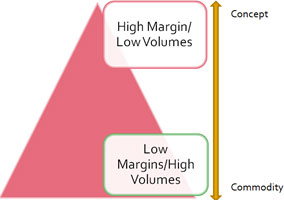|
Opportunities For New
Entrepreneurs In Medical Textiles -
A Sun Rise Industry And Role Of Centre Of Excellence SITRA
In Promotion Of Medical Textiles
4.Textile structure in Medical textiles
Medical textile products can be made from
each stage of textile manufacturing. Textiles structuring
is broadly divided into 4 categories : - fabric, yarn,
fabric and garments.
Product such as surgical cotton, wadding,
ear buds, etc., is produced directly from textile fibres.
Products such as sutures, heart valve stitching thread,
dental floss, dialysis membrane filaments produced gram
filament / yarn etc. In fabric structure there is further
classification in terms of woven (vascular graft, reusable
bed sheets & pillow covers), non woven (surgical gowns,
disposable bed sheets & pillow covers), knitted (vascular
graft, hernial mash, heart patch fabric), braded (Anterior
cruciate ligament sutures etc), (rotator cuff). All the
operational theatre garments come under stitched garment
products (surgical gowns, bed sheets, etc), products made
up of different textile structure (sanitary napkin/under
pad, fibers of non woven, wound dressing – fibers +
woven/non woven/knitted structure, etc.
5. Overall opportunities in medical
textiles
Opportunities lies in technical textile
machine manufacturing, specialised raw material
manufacturing, setting up laboratories to test these
materials /products, manpower training, etc.
-
Many medical textile products are imported
and not manufactured in India, so there is a huge
potential for manufacturing them in India. Many medical
textiles products are classified as medical devices. There
is no concrete data available for medical textiles, but
80% of medical devices are imported.
-
Though India is the second most populous
country, the penetration of medical textiles is very less
in India due to factors such as less awareness among
people, cost of products and non availability of many
products to common people. But now the usage of medical\
technical textiles is increasing due to the new generation
with a higher disposable income, more education, easy
access to media/internet.
-
Higher child birthrates - mother and
child.
-
Medical tourism - Cost of getting treated
is cheaper and faster compared to the developed countries.
-
More modern hospitals are coming up, so
growth of medical textiles is proportional by hiked with
growth of medical business.
-
Increased awareness for Medical insurance.
Medical insurance companies insist hospitals to maintain a
proper environment to reduce risk of HAI.
-
The shift in Indian culture to western
influence and globalisation has created / helped in
creating more awareness about usage of medical textiles in
day-to-day life such as wipes, sanitary napkins, diapers
to maintain cleanliness & hygiene environment.
-
Many medical textiles are used for
maintaining an hygienic environment. Young Indians are
interested in more comfort and cleanliness.
-
Availability of almost all basic raw
materials in India.
-
Mandating suggestions by GOI in different
ministries such as MoD, MoHFW, MoLE, MoR, MoHA.
-
Government initiatives by creating centres
of excellence in different fields of technical textiles.
Formation of Centre of excellence for medical textile at
SITRA has helped industry in many areas such as R&D,
standard formation, testing/characterisation etc.
-
Proactive approach of government towards
boosting TT sectors by different government scheme for
business community in terms of subsidies, special zones (Meditech
zone, Visakhapatnam), ATUF, TMTT, etc as well as promotion
of the TT scheme by every state government.
-
Government is planning to mandate a few
products as per BIS standards; this will help to eliminate
usage of substandard products (manufactured or imported).
-
Creating awareness such as distribution of
free napkins by many NGOs as well as government agencies
-
Cheap labour and abundance of manpower,
cheap power compared to many countries can help
manufacturing cheaper medical textile products.
-
Mandating purchase from MSMEs
-
Schemes such as Swachh Bharat Abhiyan,
Ayushman Bharat.
-
M/C manufacturing for medical textiles
such as Sanitary napkin making ,face mask making m/c etc
have potential to grow huge.
6. Sector wise opportunities in medical textiles

6.1 Implantable
Usually not many life saving products are manufactured in
India. India is almost fully dependant on imports.
Ultimately, very costly products are not affordable to an
average Indian. If invented and manufactured by Indian
companies, the cost may come down drastically. Lives of
many Indians can be saved. Though the demand is low and
the regulatory requirements are stringent, the profit
margins are high.
6.2 Non-implantable
These are the products that are used on the skin. Low
profit but high demand.
6.3 Extracorporeal devices
Same as Implantable life saving and again
very costly products dependent highly on imports. Though
the demand is low and the regulatory requirements are
stringent, the profit margins are high.
6.4 Hygiene textiles
Not much dependant on imports but still
MNCs of foreign origin have considerable stake compared to
the Indian manufacturers. Demand is high and investment
required is low.
6.5 Healthcare textiles
Not much dependant on imports but still
MNCs of foreign origin have considerable stake compared to
Indian manufacturers. Demand is high and investment
required is low.
7. Challenges for medical textile
business
-
Medical device products may require
license to produce or sell products in India (New medical
device rule is implemented recently).
-
And still classification of medical
textiles under different categories as medical devices
will take time.
-
Still many medical products are needed to
be classified as medical devices. It may have impact on
the small scale industry.
-
Lack of standards - So far, SITRA has
identified many medical textile products and have
developed standards for those.
-
Non availability of expertise for the
manufacture of specialised raw materials Kevlar, Nylon66,
Aramid, etc., and machinery manufacturing techniques in
India.
-
Lack of interest, awareness and confidence
among big industries to enter into the Medical Textile
business.
-
Scattered industry.
-
Lack of trained skilled manpower with
interdisciplinary knowledge.
-
Disposal of medical textile wastes.
-
Cheap import from neighbouring countries
such as Bangladesh, China due to reasons such as lack of
BIS standards.
|
